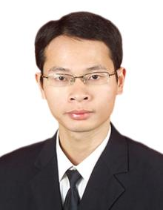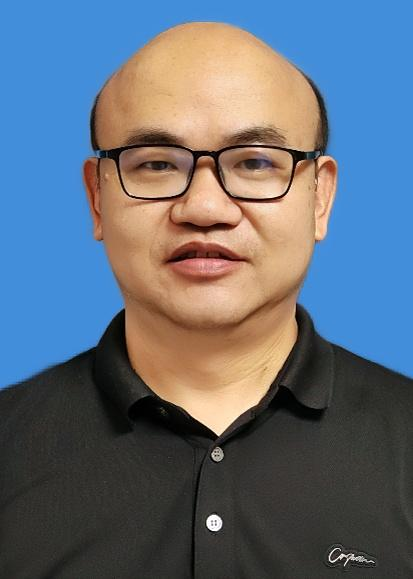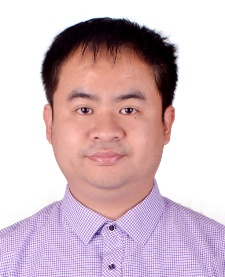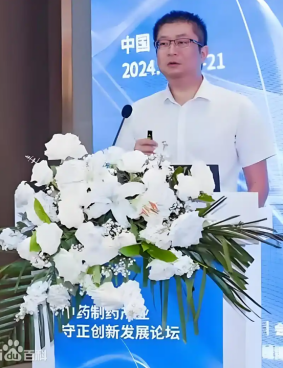| Jinshan ZengXi'an Jiaotong University, China BIO: Professor at the School of Management of Xi'an Jiaotong University, and a doctoral advisor. He has led six projects, including those funded by the National Natural Science Foundation of China and the Jiangxi Province's 'Double Thousand Plan', as well as the Provincial Exceptional Youth Program. He has published over 80 high-level papers in mainstream journals and conferences in related fields, including 25 papers in IEEE journals and 32 in top-tier journals or conferences recognized by the China Computer Federation and the China Association for Artificial Intelligence. Among these, 3 are ESI highly cited papers, and one paper was ranked fourth in the 'Top Ten Hot Papers in the Field of Mathematics in China', with the highest citation of a single paper exceeding 1500 times (Google Scholar Citation). He holds over 20 authorized invention patents. He is the Recipient of the 2025 International Basic Science Congress Frontier Science Award, the Best Paper Award at the 2018 and 2020 International Congress of Chinese Mathematicians, and the Second Prize of Jiangxi Natural Science Award (as the first author or principal investigator). He has been invited to deliver special 60-minute or invited 45-minute presentations at the International Basic Science Congress and several International Congresses of Chinese Mathematicians, and has served as vice-chairman or forum chairman at over 10 high-level academic conferences worldwide. The main research focus is on the theory and applications of optimization algorithms in artificial intelligence. Title: Model-Data-Driven Hyperspectral Compressive Snapshot Reconstruction Methods Abstract: Coded aperture snapshot spectral imaging (CASSI) is an important technique for capturing three-dimensional (3D) hyperspectral images (HSIs), and involves an inverse problem of reconstructing the 3D HSI from its corresponding coded 2D measurements. Existing model-based and learning-based methods either could not explore the implicit feature of different HSIs or require a large amount of paired data for training, resulting in low reconstruction accuracy or poor generalization performance as well as interpretability. In this talk, we introduce three novel model-data-driven HSI reconstruction methods to remedy these deficiencies, through exploiting the global spectral correlation from the HSI itself through a formulation of model-driven low-rank subspace representation and learning the deep priors by some data-driven deep learning schemes. Extensive experiments on several datasets and imaging systems validate the superiority of our methods. |
| Tinghua WangGannan Normal University, China BIO: Tinghua Wang received the Ph.D. degree in Computer Science from Beijing Jiaotong University, Beijing, China, 2010. From October 2011 to October 2013, he was a Postdoctoral Research Fellow with the Institute of Computer Science and Technology, Peking University, Beijing, China. From March 2016 to March 2017, he was a Visting Scholar with the Centre for Artificial Intelligence, Faculty of Engineering and Information Technology, University of Technology Sydney, Ultimo, NSW, Australia. Prof. Wang is currently a full-time professor with the School of Mathematics and Computer Science, Gannan Normal University, Ganzhou, China. His research interests include artificial intelligence and machine learning. He has authored and coauthored more than 60 papers in IEEE Transactions on Fuzzy Systems, Information Fusion, other refereed journals, and conference proceedings. Title: HSIC Lasso with applications Abstract: The Hilbert-Schmidt Independence Criterion Least absolute shrinkage and selection operator (HSIC Lasso), first introduced by Yamada et al. in 2014, represents an advanced feature selection method that integrates the nonlinear dependency measurement capabilities of HSIC with the sparsity-inducing regularization of Lasso. In recent years, HSIC Lasso has demonstrated remarkable versatility beyond its original scope of feature selection, emerging as a powerful tool for diverse applications including statistical inference, kernel learning, and deep learning. This talk will briefly summarize the basic concepts and theory of HSIC Lasso, and its optimization, extended models, and task-oriented algorithms with applications. Furthermore, some potential problems and directions deserving future exploration will be discussed. |
| Tao'tao WangJiangxi Institute of Technology, China BIO: Professor Wang Taotao, born in Yidu, Hubei Province, is a doctoral supervisor who mainly conducts research in the fields of big data technology and educational management. He serves as the Executive Director of the Jiangxi Computer Society and the Director of the China Simulation Society. He has led or participated in over 20 scientific research projects at various levels, including those funded by the Jiangxi Natural Science Foundation. He has published more than 10 papers in core journals or higher-level publications and has received three Jiangxi Provincial Teaching Achievement Awards. He currently serves as a Member of the Party Committee and Vice President of Jiangxi Institute of Technology. Title: A Multimodal Data Mining-Based Investigation into the Application Potential of Bacillus Species Abstract: Traditional approaches to evaluating the application potential of microbial resources in agriculture rely heavily on large-scale experimental testing, which are often inefficient and lack precision. Bacillus species, as core microbial germplasm resources for biopesticides, biofertilizers, and feed additives, urgently require accurate evaluation methods for their efficient development. This study focuses on Bacillus and addresses the challenge of assessing its application potential through a closed-loop framework of “multi-omics data mining – knowledge graph construction – potential prediction – experimental validation.” By doing so, it provides a paradigm for the precise development of agricultural microbial resources. Moving beyond the limitations of traditional experiment-driven approaches, this study integrates multimodal data (genomic and literature-based) to construct a predictive system for evaluating the application potential of Bacillus strains, significantly improving the efficiency of high-value germplasm screening. The established research framework of “data mining – model construction – experimental validation” offers a generalizable methodology for the precise evaluation of agricultural microbial resources, thereby facilitating the innovation and development of green agricultural products such as microbial pesticides and fertilizers. |
| Jia WUMonash University, Australia BIO: Wu Jia, Ph.D. in Engineering, is a Professor at Monash University in Australia and a doctoral supervisor. He is also a specially appointed flexible talent professor at Jiangxi University of Chinese Medicine. As the Director of the Medical Information and Artificial Intelligence Data Decision-Making Laboratory in Australia, he serves as an IBM Medical Information Strategic Scientist, a Highly Cited Researcher by Clarivate, and a Highly Cited Scholar by Elsevier. He has received the Victoria Awards for Science and Technology from the Australian Academy of Science and has led projects such as the Australian Scholar Initiative Fund. His primary research focuses include medical information and artificial intelligence, healthcare big data decision-making, and medical imaging with artificial intelligence. Title: Research on Artificial Intelligence Data Decision-Making in Medical Information-Assisted Diagnosis Abstract: The interdisciplinary field of medical informatics and engineering is an internationally recognized applied frontier discipline. It integrates research methodologies such as medical informatics, medical imaging, artificial intelligence, machine learning, natural language processing, neural network optimization algorithms, medical and information decision-making, auxiliary diagnosis and fuzzy inference analysis. This discipline provides auxiliary diagnosis and rapid decision-making support for medical institutions and healthcare professionals, effectively reducing misdiagnosis rates in developing countries where doctors face large patient volumes. Moreover, it establishes medical imaging-based healthcare assistance to better aid doctors in analyzing and diagnosing patient conditions, thereby minimizing misdiagnosis rates and serving as an effective means for precision medicine and precise management. Through probabilistic analysis and decision-making models in artificial intelligence, it develops pathological staging prediction methods for auxiliary diagnosis, creating personalized medical databases tailored to individual patient conditions and characteristics. This enables adaptive treatment plan analysis and recommendation methods for clinicians. For clinical patients under physician management, interdisciplinary research combining medical imaging and related fields tracks and adjusts treatment plans in real-time for different pathological states during therapy cycles, establishing multi-source data collaboration for auxiliary treatment recommendation decision-making. This research direction focuses on future technological advancements, emphasizing team innovation capacity development and refining a series of new achievements. |
| Jiatuo XuShanghai University of Traditional Chinese Medicine, China BIO: Xu Jiatuo, Professor (Second-Level), Doctoral Supervisor, and Director of the Traditional Chinese Medicine (TCM) Program—an MOE-recognized First-Class Undergraduate Major at Shanghai University of Traditional Chinese Medicine (SHUTCM). He currently serves as Director of the Office of Development Planning (Office of Discipline Construction) at SHUTCM. His research focuses on the intelligent development of TCM diagnostic and therapeutic technologies. He has served as Principal Investigator and Chief Scientist for major national projects, including the National Key R&D Program and other national science and technology initiatives. Professor Xu has received numerous honors, including the Shanghai “May 1st Labor Medal,” “Outstanding Young Teacher,” “Rising Star in Science and Technology,” and “Dawn Scholar.” He concurrently serves as Vice Chairman of the Diagnosis Professional Committees of both the China Association of Chinese Medicine and the Chinese Association of Integrative Medicine. He has led over 30 national research projects, developed a tongue diagnosis instrument certified as a Class II medical device, published more than 200 research papers, and holds over 20 patents and software copyrights. He has authored six academic monographs and received six scientific and technological awards, including the First Prize of the Science and Technology Award of the China Association of Chinese Medicine. Title: Intelligent TCM Diagnostic Information Technology and Its Clinical Applications Abstract: This lecture will present the current development and cutting-edge progress of Traditional Chinese Medicine (TCM) diagnostic technologies in the era of artificial intelligence. It will focus on the informatization and intelligent transformation of traditional diagnostic methods such as tongue and pulse diagnosis. Through research cases on health status assessment and typical diseases including diabetes and lung cancer, the lecture will illustrate the application value of intelligent TCM diagnostic systems in disease identification, syndrome differentiation, and clinical decision support. It will also share the latest achievements in key technologies such as multimodal data fusion, feature extraction, and model optimization, and will look ahead to the future of deep integration between TCM diagnostics and modern information technology. |
| Leiyue YaoJiangxi University of Traditional Chinese Medicine, China BIO: Yao Leiyue, male, born in July 1982, is a member of the Communist Party of China. He holds a doctorate and is a professor, doctoral supervisor, and a young discipline leader cultivation target at the Computer College of Jiangxi University of Traditional Chinese Medicine. He is also a master's supervisor at Nanchang University and Jiangxi Agricultural University. He is a system analyst. His research focuses include artificial intelligence and data mining, computer vision technology, and big data processing and optimization based on mobile internet. He has been responsible for the National Natural Science Foundation project "Research on Small Sample Complex Human Behavior Recognition Technology Based on Action Semantic Combination" (2024-2027) and the doctoral start-up fund project "Key Technologies for Equipment and Process Digital Twin in Intelligent Manufacturing of Chinese Herbal Tablets". He developed the HPA-UNet tongue image segmentation algorithm, and the related research results have been published in top journals of the Chinese Academy of Sciences such as "IEEE Journal of Biomedical and Health Informatics" and "Applied Soft Computing". He holds an invention patent for "Real-time Action Temporal Positioning Method" and multiple software copyrights. Title: Research on Small-Sample Complex Human Behavior Recognition Technology Based on Action Semantic Combination Abstract: Complex human behavior recognition is a core research content in the fields of human-computer interaction and intelligent control, with broad application prospects and high research value. This report aims at zero-sample complex human behavior recognition, and conducts research around four aspects: quantification representation of human behaviors and data augmentation, action sequence positioning, semantic layer feature learning of complex human behaviors. It proposes a three-dimensional matrix representation method for human behaviors based on the compact storage concept, a series of behavior sample enhancement strategies based on human physiological structure and human movement characteristics, and a probing single-step action sequence positioning method based on the priority of large-scale time windows. According to the definition that "any complex human behavior is a combination of basic action sequences", the complex human behavior recognition problem is transformed into two main issues: "the extraction of action verbs and their features in long-time videos" and "judgment of semantic similarity of action combinations". A neural network model that can effectively learn semantic features of complex human behaviors and perform accurate recognition even in the zero-sample scenario is designed and constructed. |






